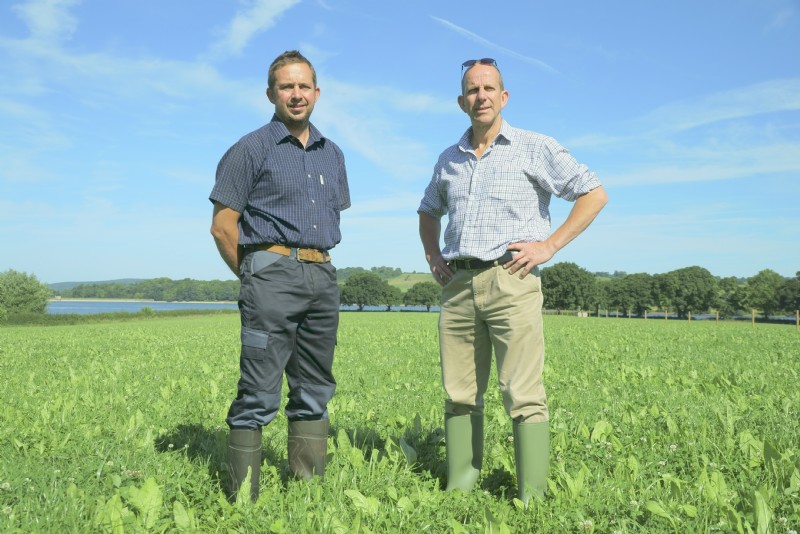

Jon Wilson is Farms Manager at Holt Farms, the Yeo Valley Family Farm, which provides milk to Yeo Valley to produce their well-known range of dairy products.
‘Our aim is to feed the cows on grazing leys or silage to produce the best quality milk and this is being achieved by giving over increasing acreages of land to herbal leys,’ says Jon.
The farm stretches from Blagdon Lake to the top of the Mendips and is home to two milking herds, comprising 420 British Friesian Dairy cows, with 240 cows at Holt Farm and 180 cows at Yoxter Farm, plus arable/rotational silage and sheep. Youngstock and bulls are bred on the farm. The soil ranges from loamy clay to thin limestone brash soils on top of the Mendips.
The arable rotation of two cereals and three years of red clover cutting leys was quite tight so last year the decision was made to reduce to first cereals only and include white clover and herbal leys across most of the land.
A large acreage was established in Autumn 2015 with more being sown in August 2016, early enough to get them well established before winter.
The drivers for change were the benefits of herbal leys in terms of soil improvement and nutrition for cows, anthelmintic properties and the benefits of herbs for mining minerals.
The herbal grazing ley is a complex mixture and Yeo Valley Family Farms, in consultation with Ian Wilkinson of Cotswold Seeds, took the view that it was worth including the widest variety of species and experimenting with management to see what worked best on the particular soil.
As the farm is organic, Jon must be mindful of weeds, particularly docks. If they become an issue in older leys, the field will be grazed once or twice in early spring and then cultivated repetitively during the summer so that the dock roots are thrown onto the surface and eradicated during this fallow period and a new ley established in mid to late August. Last spring was quite cold and the ley took a while to get going but then came through good and thick, helping to crowd out any potential weeds as the ley established.
The cows are strip grazed on a 21-24 day cycle. ‘After grazing a field we may go in with the topper to tidy up and help promote tillering and then we apply separated liquid from the slurry store with a low ground pressure tanker and dribble bar at 1200 gallons per acre to aid regrowth,’ explains Jon.
Herd Manager at Holt Farm, Richard Searle adds: ‘The rotation is all about trying to get the most out of the ley, leaving energy levels in the ley so that it can be grazed off and grow back, helping to tiller it out so the cows get the best nutritional value from it.’
Richard has seen very positive results from the herbal ley: ‘The cows like the ley as a grazing platform, and we are finding benefits to fertility. The diversity of the ley means it is more balanced than the white clover grazing leys, is higher in sugars and not too high in protein, so we expect an improvement in milk constituent values.’
Date Posted: 16th February 2017



